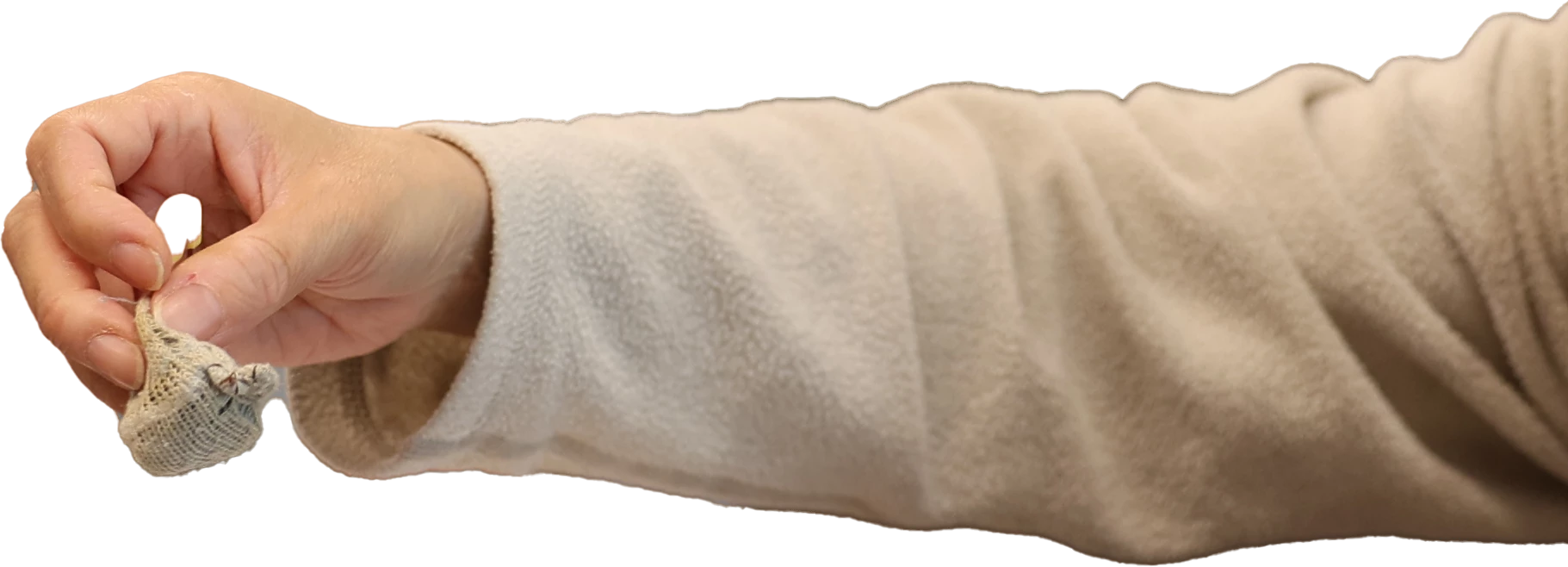How People with Blindness Cherish Meaningful Memories
Team
- Min Yoo
- William Odom
- Arne Berger
- Lauren Knight
- Sam Barnett
- Samein Shamsher
- Sadhbh Kenny
- Priscilla Lo
- Gillian Russell
- Ana Lucia Diaz de Leon Derby
Timeframe
2019 ↝ OngoingKeywords
- Alternative Outcomes
- Digital Archives
- Domestic Technology
- Research Through Design
Outcome
-
↬
Publications at CHI’24, DIS’22 & CHI’21
-
↬
Long term Participatory Design project
-
↬
Case study of Alternative Research Outcomes
The Core Idea

Rather than offering solutions with “sighted in-mind” for blind people, we chose to work together through a series of co-design activities. How could interactive technology be designed, based on existing practices and preferences of blind people, to offer new experiences that encourage positive self-reflection and social connections with their loved ones?
Exploration
We visited 9 blind people’s homes and interviewed them in person to understand their own practices of capturing, revisiting and sharing their life experiences. Participants shared personal stories and memories associated with cherished objects, both physical and digital.
Ray’s action figures from 1996.
Translating Research Outcomes/Research Communication
Participants desired to know how other participants had responded to learn about other blind people’s reminiscence experiences, but COVID restrictions in 2021 limited a follow-up session for group debriefing. This strongly motivated us to make an alternative version of the research findings in an enjoyable form for our blind participants.
This step explored a new initiative of Alternative Research Outcomes (ARO) that influences other research projects.
Ideation
We decided to pursue a design direction with sound.
Group interviews were hosted to collaboratively explore how to build on their own experience of reminiscence.
Then, we shadowed participants as we recorded an event or an experience of their choice to create sonic highlights.
Research Through Design with Differently Abled People: Participation, Ownership and Equitable Conclusions
- Min Yoo,
- William Odom,
- Arne Berger
Translating HCI Research to Broader Audiences: Motivation, Inspiration, and Critical Factors on Alternative Research Outcomes
- Min Yoo,
- Sophia Ppali,
- William Odom,
- Yumeng Zhuang,
- Kritika Kritika,
- Wyatt Olson,
- Catherine Wieczorek,
- Heidi Biggs,
- Arne Berger,
- Audrey Desjardins,
- Ron Wakkary,
- Katherine Ringland
Remembering through Sound: Co-creating Sound-based Mementos with People with Blindness
- Min Yoo,
- William Odom,
- Arne Berger,
- Sam Barnett,
- Sadhbh Kenny,
- Priscilla Lo,
- Lauren Knight,
- Samein Shamsher,
- Gillian Russell
Storywork & Reciprocity: On the Design of an Audio Documentary that Extends HCI Research back to Participants
- Min Yoo,
- Lauren Knight,
- William Odom,
- Arne Berger
Understanding Everyday Experiences of Reminiscence for People with Blindness: Practices, Tensions and Probing New Design Possibilities
- Min Yoo,
- William Odom,
- Arne Berger
Understanding How Audio Mediates Experiences of Reminiscence for People Living with Blindness
- Min Yoo,
- William Odom,
- Arne Berger
Acknowledgments
-
↬
This research took place in Vancouver, Canada, on the unceded ancestral territories of the xʷməθkʷəy̓əm (Musqueam), Sḵwx̱wú7mesh Úxwumixw (Squamish), səlilwətaɬ (Tsleil-Waututh), q̓ic̓əy̓ (Katzie), kʷikʷəƛ̓əm (Kwikwetlem), Stó:lō Coast Salish, K’ómoks, Tla’amin, Qayqayt, Kwantlen, Semiahmoo and Tsawwassen Nations. These locations are rooted within Indigenous lands and nations.
-
↬
The Natural Sciences and Engineering Research Council of Canada (NSERC), Social Sciences and Humanities Research Council of Canada (SSHRC), Canada Foundation for Innovation (CFI) supported this research.
-
↬
We also acknowledge open access support from the German Research Foundation (Deutsche Forschungsgemeinschaft DFG) and the Open Access Publishing Fund of Anhalt University of Applied Sciences.








